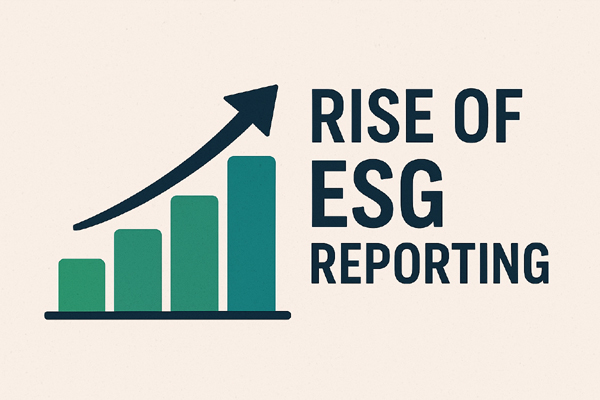The rise of ESG reporting and what it means for Organizations

Reporting on environmental, social, and governance (ESG) factors is rapidly shifting from a voluntary measure to a standard business practice. This form of disclosure provides information on a company’s operations across these three areas. For a long time, many organizations viewed non-financial reporting as a secondary activity. Now, investors, regulators, and customers expect transparent and reliable information on how a business manages its broader societal and environmental impacts.
This change means organizations must look beyond traditional financial statements. They need to collect, manage, and disclose data related to their sustainability and ethical practices. This transition presents both challenges and opportunities, requiring leaders to integrate ESG considerations into their core strategy and operations.
Forces driving the focus on ESG
Several factors are contributing to the increased emphasis on ESG disclosures. Investor demand is a primary driver, with a growing number of investment funds assessing companies on their ESG performance to identify long-term risks and opportunities not always apparent in financial analysis. Companies with strong ESG credentials are often seen as more resilient and better prepared for future challenges.
Regulatory bodies are also introducing more structured requirements for non-financial reporting. These frameworks aim to standardize the information companies provide, making it more consistent and comparable across industries. European Commission 2024 official guidance supports this change in reporting. This push for standardization helps to prevent ‘greenwashing’, where a company’s sustainability claims may not be supported by its actual practices. Furthermore, there is growing pressure from customers and employees who want to be associated with businesses that demonstrate a commitment to ethical and sustainable operations.
Practical steps for ESG reporting
For organizations new to this area, the first step is to identify which ESG issues are most relevant to their specific operations and stakeholders. This process, often called a materiality assessment, helps to focus reporting efforts on the factors that have the greatest impact. For example, a logistics company might priorities its fleet’s greenhouse gas emissions and employee safety records, while a technology firm might focus on data privacy and the labor standards within its supply chain.
Once material issues are identified, the next phase involves gathering accurate data. This can be a complex task, as information may be spread across different departments and systems. The environmental category includes metrics like energy consumption, water usage, and waste management. Social metrics cover areas such as employee diversity, health and safety, and community relations. Governance relates to board structure, executive pay, and internal controls to manage risk and ensure ethical behavior.
Benefits beyond regulatory compliance
While meeting regulatory requirements is a clear motivation, the advantages of thorough ESG reporting extend much further. Transparently disclosing ESG performance can enhance an organization’s reputation and build trust with stakeholders, including customers and investors. In a competitive market, a strong ESG profile can become a differentiator, helping to attract and retain talent and appeal to ethically-minded consumers.
The process of gathering and analyzing ESG data can also reveal opportunities for operational improvements and cost savings. For instance, tracking energy consumption might highlight inefficiencies, and addressing them can lead to reduced utility bills. Similarly, examining supply chain practices could uncover risks or lead to more resilient and sustainable sourcing. Ultimately, integrating ESG into business strategy helps organizations manage a broader range of risks and identify new avenues for growth and innovation.
Preparing for new reporting standards
The landscape for sustainability disclosure is continually evolving, with new standards and frameworks emerging. This requires organizations to remain adaptable and informed about changing expectations. Establishing robust internal processes for data collection, verification, and reporting is fundamental to building a credible and effective ESG programmed. This includes defining roles and responsibilities within the organization and ensuring that data is accurate and auditable.
For many leadership teams, navigating this complex area can be demanding. Seeking external support with sustainable business practices can help organizations develop a clear roadmap and implement effective reporting strategies. With a structured approach, businesses can meet compliance obligations and turn ESG reporting into a strategic tool that supports long-term value creation.
Follow – https://financialapple.com for More Updates


